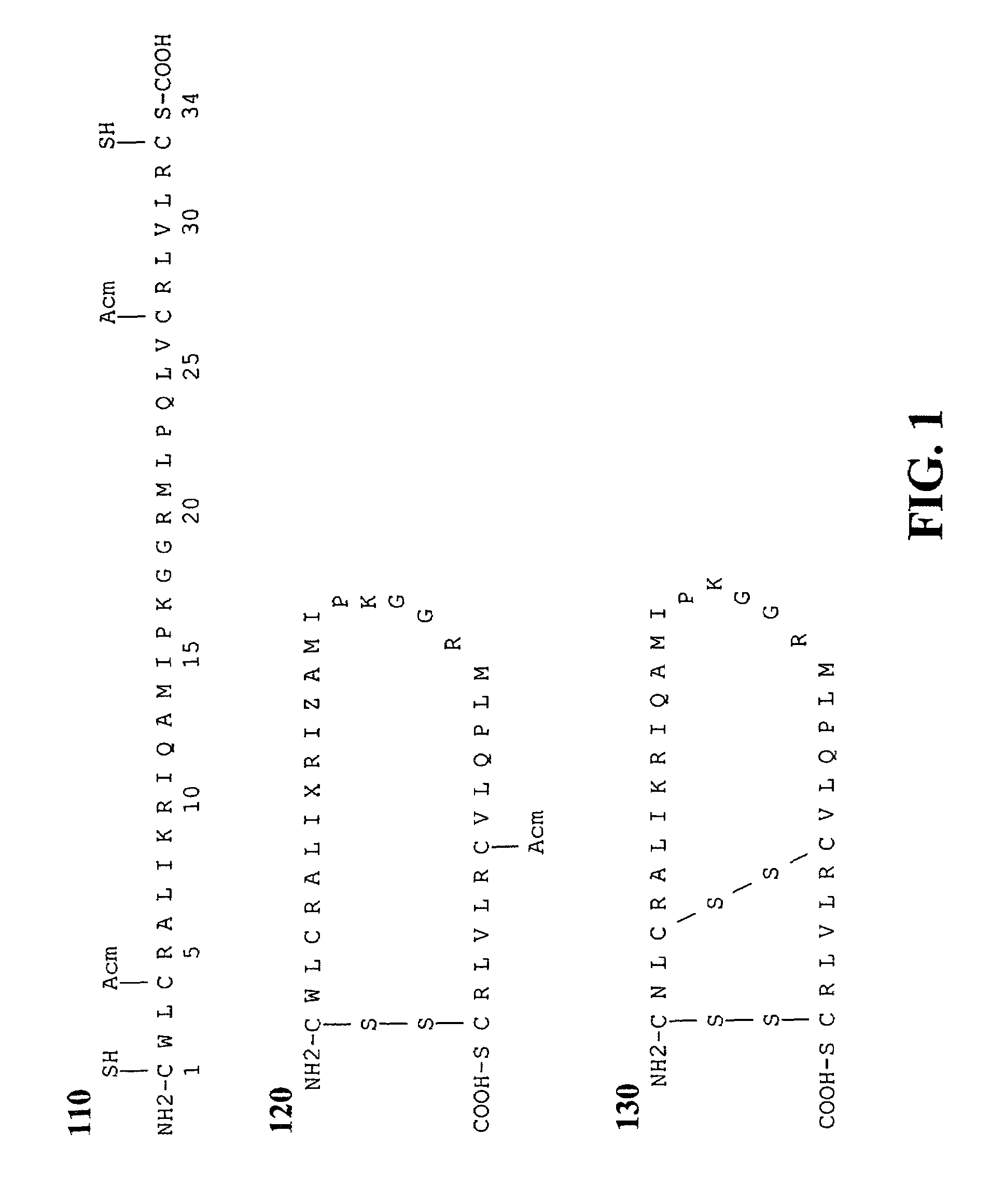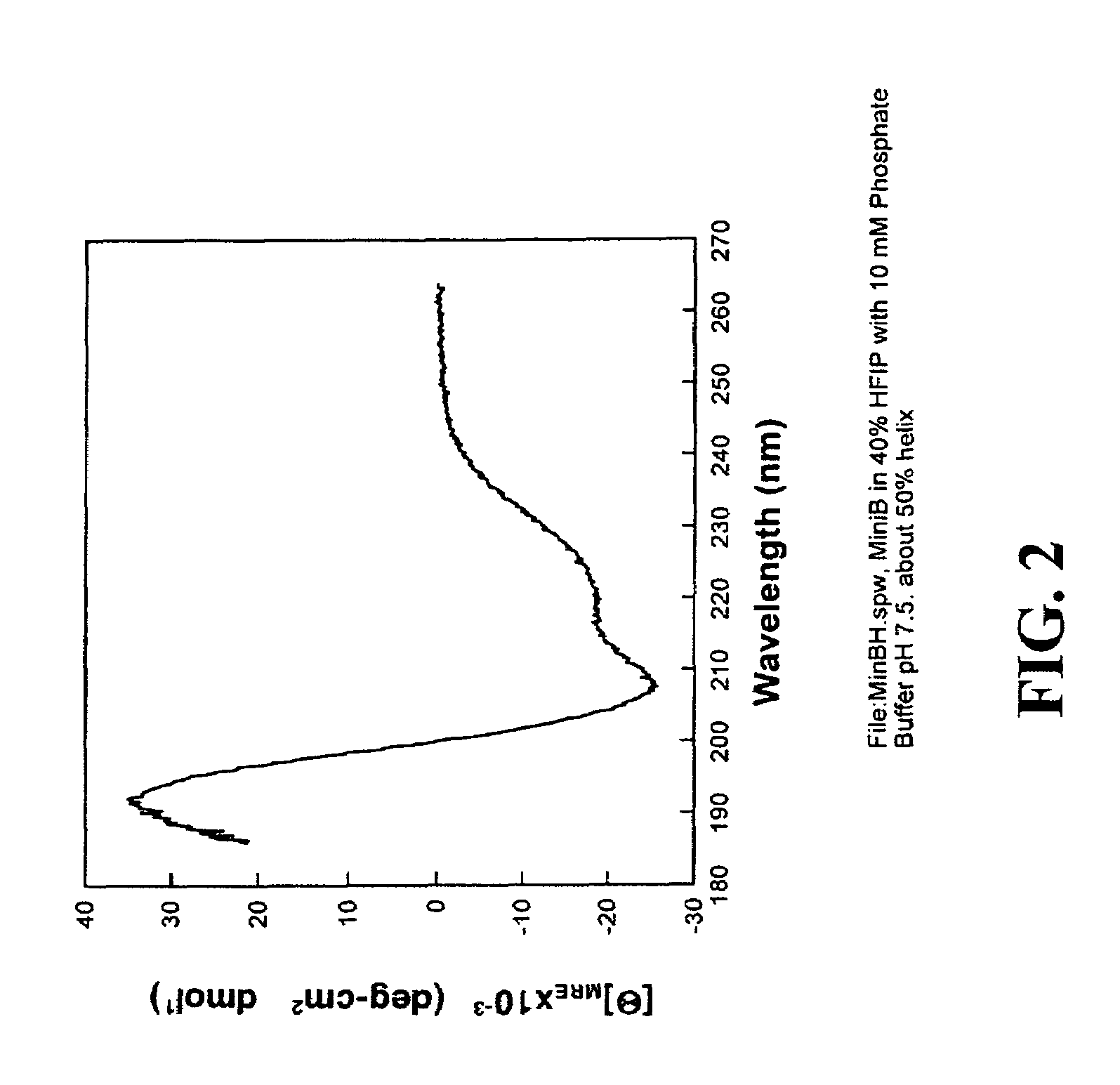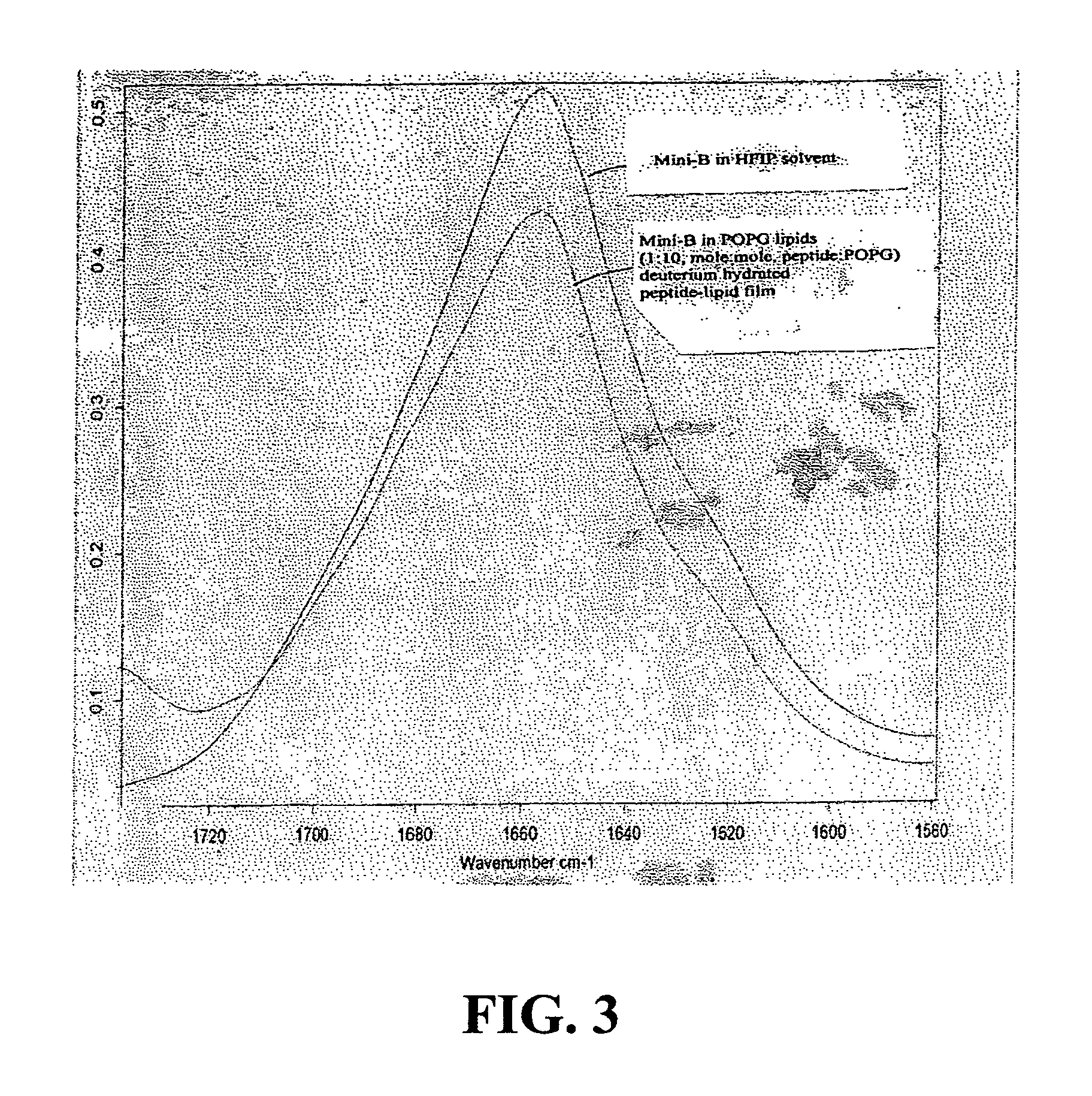Exogenous surfactant protein B mimic
a surfactant protein and mimic technology, applied in the direction of peptides/protein ingredients, immunoglobulins, peptides, etc., can solve the problems of high cost of surfactant supplements, insufficient or properly functioning surfactants in infants' lungs, and inability to use surfactant supplements from native materials, etc., to achieve the effect of increasing the compliance of the lungs
- Summary
- Abstract
- Description
- Claims
- Application Information
AI Technical Summary
Benefits of technology
Problems solved by technology
Method used
Image
Examples
example 1
[0068]FIG. 6A illustrates an example of an oxygenation response of a lavaged rat model of RDS comparing INFASURF™, a known effective animal based (cow lung lavage that includes surfactant lipids and native Cow SP-B and SP—C proteins) supplement formulation (—◯—), pig native surfactant B in INFASURF™ lipids (—Δ—), Mini-B peptide in simulated INFASURF™ lipids (—▪—), the C-terminal domain of SP-B (residues 63-78) in the oxidized (--♦--) and reduced format (—∇--), a serine derivative the C-terminal domain of SP-B (residues 63-78) with cationic arginines (R) replaced with serine residues, in oxidized (—◯--) and (—∇—) format, the N-terminal domain of SP-B (residues 11 to 25 of native SP-B) in the monomer (—□—) and a dimer (—●--) conformation and ISPL alone (—Δ—). The results suggest that the full length of a Mini-B construct of FIG. 5 outperforms all of the peptide segments of Mini-B separately. The activity of Mini-B construct closely parallels the oxygenation response that is observed f...
example 2
[0069]FIG. 6B represents dynamic compliance measurements (a measure of lung mechanical plasticity) in the Rat RDS animal model system comparing INFASURF™ replacement formulation, pig native surfactant B in INFASURF™ lipids (—◯—), a Mini-B construct in simulated INFASURF™ lipids (—▪—), the C-terminal domain of SP-B (residues 63-78) in the oxidized (--♦--) and reduced (—∇--) format, a serine derivative the C-terminal domain of SP-B (residues 63-78) with cationic arginines (R) replaced with serine residues, in oxidized (—◯--) and (—∇—) format, the N-terminal domain of SP-B (residues 11 to 25 of native SP-B) in the monomer (—□—) and dimer (—●--) conformation and ISPL alone (—Δ—). The results indicate that a Mini-B construct performs very nearly as well as the commercial preparation containing both native SP-B and SP—C proteins and out performs all other formulations including native SP-B and peptide elements of the N- and C-terminal domains of the oxidized Mini-B construct.
[0070]The in ...
example 3
[0071]Further in vitro surface activity studies of a Mini-B construct in vitro surface activity using Langmuir trough and surface pressure dependent changes in peptide-lipid film microstructure also suggest that a Mini-B construct has a mechanism of action similar to that of the native SP-B protein.
[0072]Surface shear viscosity measurements of a Mini-B construct in a simulated INFASURF™ lipid dispersion ISPL (cow lung lavage lipids) is represented in FIG. 7. The shear surface viscosity remains constant at a large range of surface pressures and over compression-expansion cycles (film collapsed at the end of each compression). The film remains liquid-like at any surface pressure suggesting that the surface viscosity of a Mini-B construct in ISPL lipids is similar to that observed in surfactant preparations containing native SP-B and SP—C proteins and lipids.
[0073]Langmuir trough measurements of a Mini-B construct in ISPL lipids are represented in FIG. 8. The peptide at two different c...
PUM
| Property | Measurement | Unit |
|---|---|---|
| Fraction | aaaaa | aaaaa |
| Fraction | aaaaa | aaaaa |
| Fraction | aaaaa | aaaaa |
Abstract
Description
Claims
Application Information
 Login to View More
Login to View More - R&D
- Intellectual Property
- Life Sciences
- Materials
- Tech Scout
- Unparalleled Data Quality
- Higher Quality Content
- 60% Fewer Hallucinations
Browse by: Latest US Patents, China's latest patents, Technical Efficacy Thesaurus, Application Domain, Technology Topic, Popular Technical Reports.
© 2025 PatSnap. All rights reserved.Legal|Privacy policy|Modern Slavery Act Transparency Statement|Sitemap|About US| Contact US: help@patsnap.com



